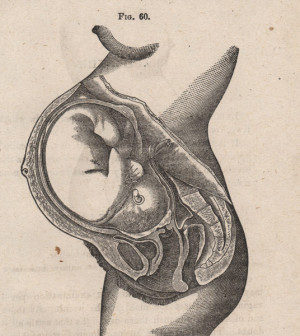- Skip Storing This Everyday Product in the Fridge Door
- Green Tea + B3 Pairing May Boost Brain Health
- Navigating Your Midlife Crisis: Embracing New Possibilities
- City Raccoons Showing Signs of Domestication
- Mapping the Exposome: Science Broadens Focus to Environmental Disease Triggers
- One Week Less on Social Media Linked to Better Mental Health
- Your Brain Changes in Stages as You Age, Study Finds
- Some Suicide Victims Show No Typical Warning Signs, Study Finds
- ByHeart Formula Faces Lawsuits After Babies Sickened With Botulism
- Switch to Vegan Diet Could Cut Your Greenhouse Gas Emissions in Half
Secondhand Smoke in Childhood Thickens Arteries


Secondhand smoke causes irreversible damage to children’s arteries and puts them at increased risk for heart attack and stroke later in life, a new study says.
Researchers looked at more than 3,700 adults in Australia and Finland, and found that those exposed to secondhand smoke when they were children had thicker artery walls.
The walls of the neck arteries in those who grew up in homes where both parents smoked were an average of 0.015 millimeters thicker than in those whose parents did not smoke.
That means that exposure to secondhand smoke in childhood adds an extra 3.3 years to the age of an adult’s blood vessels, according to the authors of the study published online March 5 in the European Heart Journal.
They said their findings provide further evidence to support measures to protect children from secondhand smoke.
“Our study shows that exposure to passive smoke in childhood causes a direct and irreversible damage to the structure of the arteries. Parents, or even those thinking about becoming parents, should quit smoking. This will not only restore their own health but also protect the health of their children into the future,” study author Seana Gall, a research fellow in cardiovascular epidemiology at the Menzies Research Institute Tasmania and the University of Tasmania, said in a journal news release.
“While the differences in artery thickness are modest, it is important to consider that they represent the independent effect of a single measure of exposure — that is, whether or not the parents smoked at the start of the studies — some 20 years earlier in a group already at greater risk of heart disease,” Gall said.
“For example, those with both parents smoking were more likely, as adults, to be smokers or overweight than those whose parents didn’t smoke,” Gall explained.
Having only one parent who smoked did not appear to have an effect on children’s arteries.
“We think that the effect was only apparent with both parents smoking because of the greater overall dose of smoke these children were exposed to,” Gall said.
“We can speculate that the smoking behavior of someone in a house with a single adult smoking is different,” Gall added. “For example, the parent that smokes might do so outside, away from the family, therefore reducing the level of passive smoking. However, as we don’t have this type of data, this is only a hypothesis.”
While the study showed an association between having two parents who smoked and an increased risk of heart trouble later in life, it did not prove a cause-and-effect link.
More information
The U.S. Centers for Disease Control and Prevention outlines the health effects of secondhand smoke.
Source: HealthDay
Copyright © 2025 HealthDay. All rights reserved.










